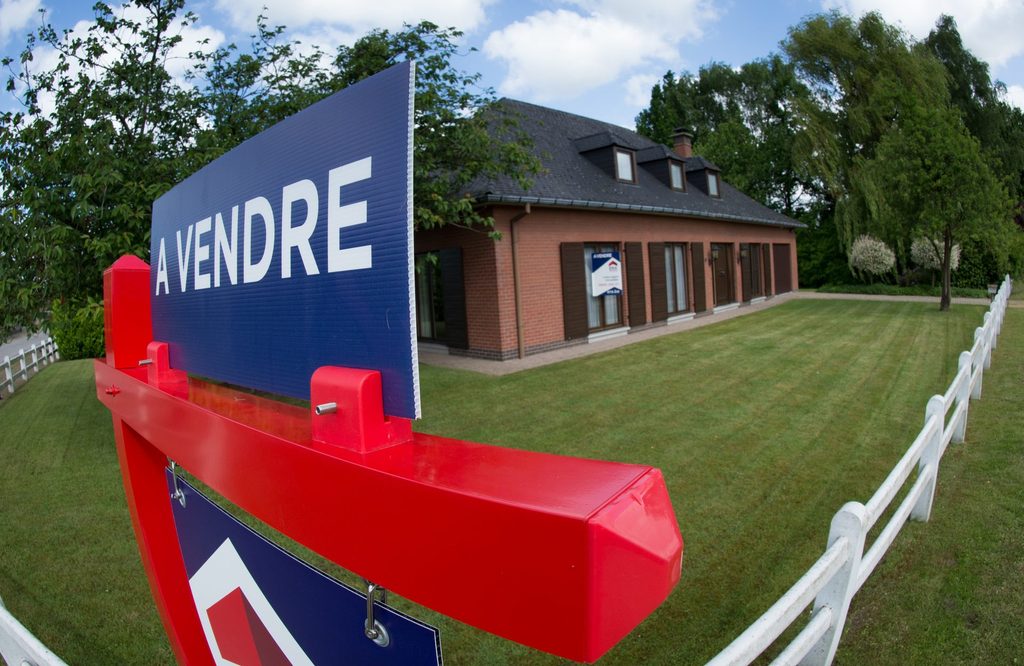Property purchasing power is falling across Europe, and while the cost of living crisis has hit Belgian households hard in this aspect, they are still better off than people in other EU countries.
The size of a property that European households can afford to buy is smaller than 1.5 years ago. Belgian real estate purchasing power has fallen by 25 m² since the start 0f last year, a European survey conducted by real estate website Immoweb showed.
"In Belgium, the purchasing power of a home has fallen from 114 m² in January 2022 to 89 m² today for a couple with a median income and no children. That's a drop of 25 m² or 22%," said Jonathan Frisch, real estate economist at Immoweb.
This evolution is due to rising interest rates (from 1% to 4% on average depending on the country) which has seen the cost of mortgages rapidly rise. The number of loans granted has also fallen sharply as banks apply stricter conditions.
In Belgium, for example, the number of loans granted fell by 27% from July 2022 to July 2023.
Overall, this led to a sharp fall in households' borrowing capacity of -15% to -30% across Europe, meaning households are forced to buy smaller properties than before or are forced to withdraw from the property market until conditions are more favourable to buy.
Largest decline, but still better off
Despite recording the second-largest sharpest decline, Belgian households are still much better off than people in neighbouring Luxembourg, France and Germany, but also than people in Spain, Portugal and Italy.
In France, for example, the housing purchasing power (HPP) has dropped by 17% from 70 m² to 53 m², while in Germany, where this figure dropped by 11%, households can afford a property of 58 m² compared to 69 m² at the start of 2022.
The same trend has been recorded in the capitals. While it is the most expensive place in Belgium, Brussels has by far the highest purchasing power with 62 m², almost twice as much as Berlin (35 m²) and almost four times as much as Paris (17 m²).

Because of the high median income compared to neighbouring countries, Belgium's housing purchasing power is more resilient. Credit: ERA Belgium
Property purchasing power remains significantly higher in Belgium because of the relatively low average price per square metre (€2,300/m²) and the high median income compared to neighbouring countries.
"The fact that the purchasing power of Belgian households remains high compared to neighbouring countries is one of the reasons why property prices have held up so well so far," said Frisch.
While the decreasing property purchasing power is putting even more pressure on prices, resulting in more price corrections, in Belgium, prices are continuing to rise nationwide.
The drop in HPP is smaller in Germany and Luxembourg, as prices there fell by 6.7% and 6.5% respectively, Immoweb pointed out. "That fall has partially offset the rise in mortgage costs, cushioning the loss of purchasing power."
Why is Belgium holding up better?
Frisch pointed out that the countries where real estate purchasing power was lowest at the start of 2022 are also the countries where the fall in house prices is strongest and fastest.
"This is not illogical, as households in these countries had already reached their maximum borrowing capacity or were very close to it. So they cannot spend even more income to buy a home. Rising interest rates thus put further pressure on prices in these countries," he noted.
"In contrast, Belgium had a much higher purchasing power before 2022, which is why we see property prices in our country holding up 'better' than in other countries, even if we see a slowdown."

